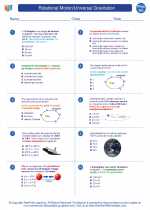Amplitude in Physics
Amplitude is a crucial concept in physics, particularly in the study of waves and oscillations. It refers to the maximum displacement or distance moved by a point on a vibrating body or wave from its equilibrium position. In simpler terms, it can be thought of as the "height" of a wave or the "strength" of an oscillation.
Study Guide
Definition
Amplitude is the maximum displacement or distance moved by a point on a vibrating body or wave from its equilibrium position.
Representation
Amplitude is often represented by the symbol "A" in mathematical equations and diagrams.
Units
The units of amplitude depend on the type of wave or oscillation being studied. For example, in the case of simple harmonic motion, the units of amplitude are meters (m).
Significance
Amplitude determines the energy carried by a wave and influences the intensity of the wave. It is also related to the loudness of sound waves and the brightness of light waves.
Formula
The general formula for amplitude can be expressed as:
A = |xmax - xeq|
Where A is the amplitude, xmax is the maximum displacement, and xeq is the equilibrium position.
Types of Waves
Amplitude can be applied to various types of waves, including mechanical waves (such as water waves and sound waves) and electromagnetic waves (such as light waves).
.◂Physics Worksheets and Study Guides High School. Rotational Motion/Universal Gravitation

 Worksheet/Answer key
Worksheet/Answer key
 Worksheet/Answer key
Worksheet/Answer key
